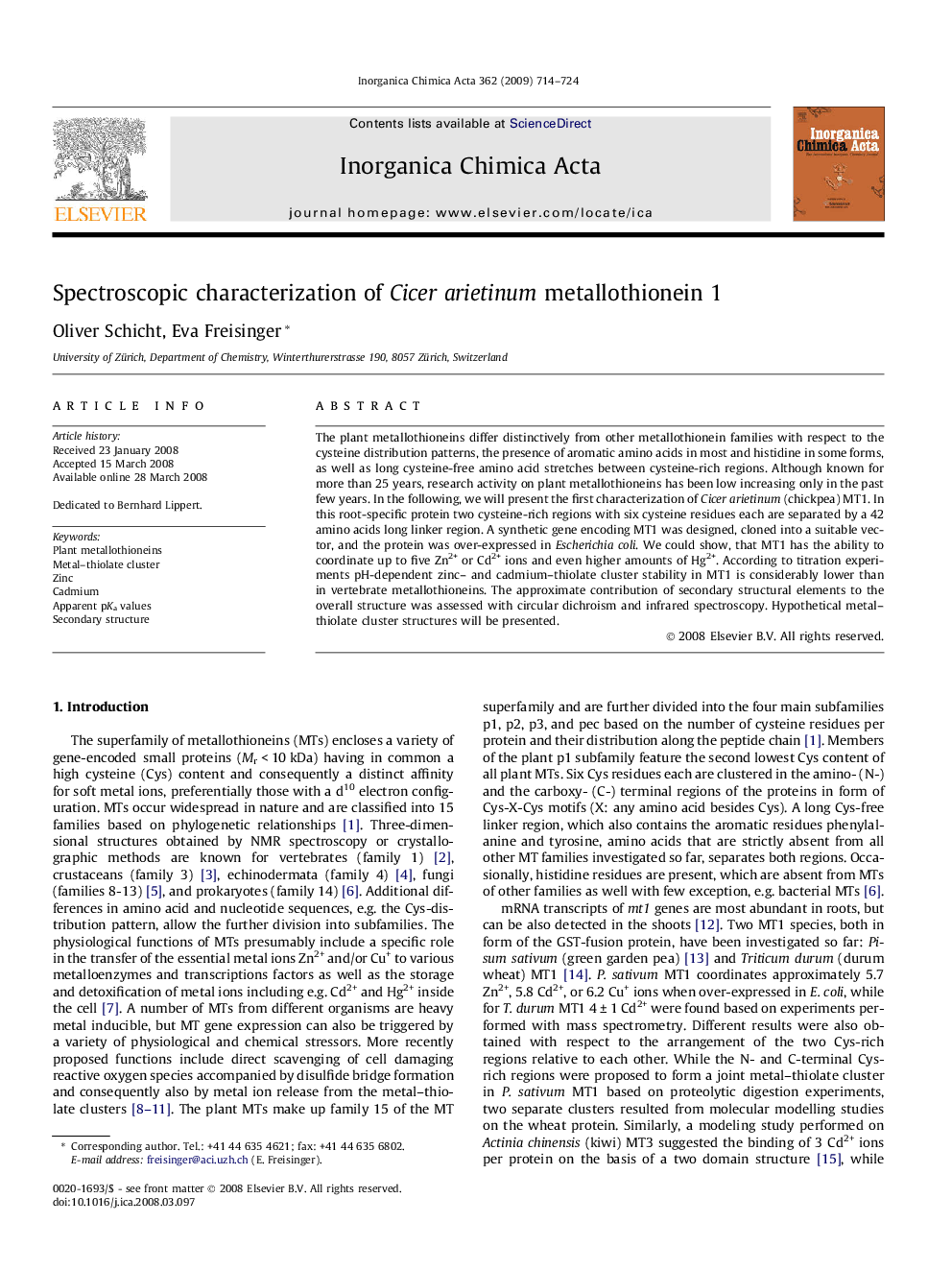| کد مقاله | کد نشریه | سال انتشار | مقاله انگلیسی | نسخه تمام متن |
|---|---|---|---|---|
| 1308821 | 975186 | 2009 | 11 صفحه PDF | دانلود رایگان |

The plant metallothioneins differ distinctively from other metallothionein families with respect to the cysteine distribution patterns, the presence of aromatic amino acids in most and histidine in some forms, as well as long cysteine-free amino acid stretches between cysteine-rich regions. Although known for more than 25 years, research activity on plant metallothioneins has been low increasing only in the past few years. In the following, we will present the first characterization of Cicer arietinum (chickpea) MT1. In this root-specific protein two cysteine-rich regions with six cysteine residues each are separated by a 42 amino acids long linker region. A synthetic gene encoding MT1 was designed, cloned into a suitable vector, and the protein was over-expressed in Escherichia coli. We could show, that MT1 has the ability to coordinate up to five Zn2+ or Cd2+ ions and even higher amounts of Hg2+. According to titration experiments pH-dependent zinc– and cadmium–thiolate cluster stability in MT1 is considerably lower than in vertebrate metallothioneins. The approximate contribution of secondary structural elements to the overall structure was assessed with circular dichroism and infrared spectroscopy. Hypothetical metal–thiolate cluster structures will be presented.
Cicer arietinum MT1, a previously uninvestigated plant metallothionein, was over-expressed in Escherichia coli and purified. A subsequent spectroscopic investigation reveals the metal ion binding abilities of this protein as well as apparent pKa values of the cysteine residues in presence of the respective metal ions. Additionally, secondary structural elements were determined with IR spectroscopy.Figure optionsDownload as PowerPoint slide
Journal: Inorganica Chimica Acta - Volume 362, Issue 3, 20 February 2009, Pages 714–724